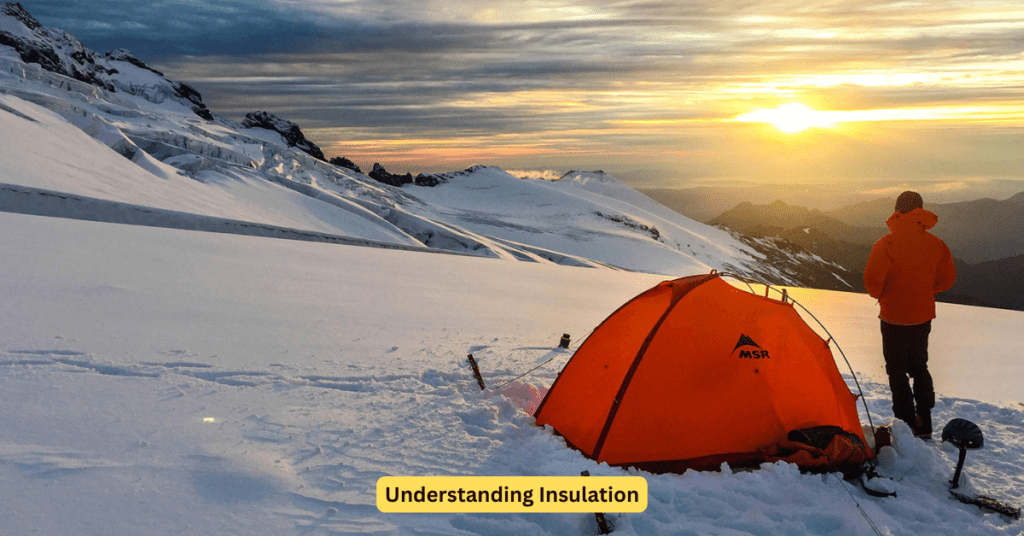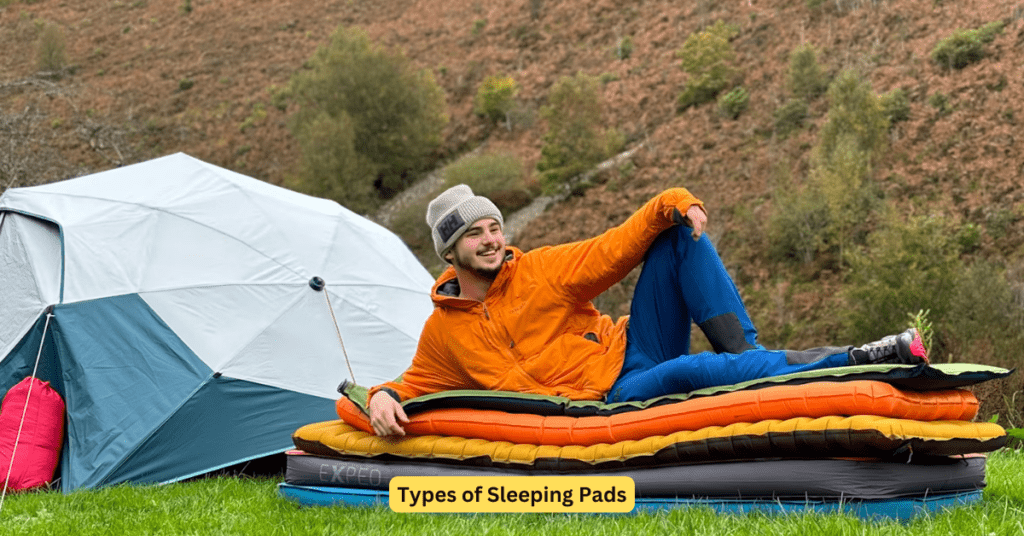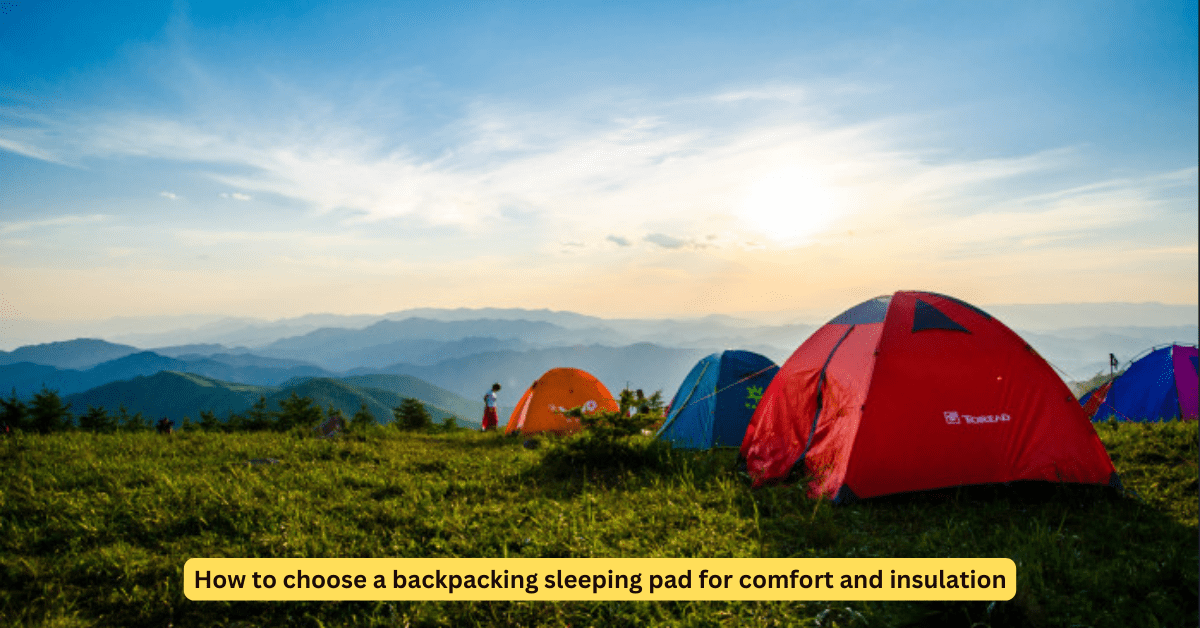Introduction
When venturing into the great outdoors for a backpacking adventure, ensuring a good night’s sleep is essential for rejuvenation and enjoyment. A key component of achieving this is selecting the right sleeping pad. A backpacking sleeping pad not only provides comfort but also serves as insulation against the cold ground. However, with a plethora of options available in the market, choosing the perfect one can be overwhelming. In this comprehensive guide, we will break down the factors to consider when selecting a backpacking sleeping pad for optimal comfort and insulation.
Understanding Insulation

Before delving into the selection process, it’s crucial to understand the importance of insulation in a backpacking sleeping pad. Insulation prevents the transfer of body heat to the ground, keeping you warm and comfortable throughout the night, especially in colder environments. Insulation is typically measured using an R-value, with higher values indicating better insulation. Here’s a breakdown of common R-values and their corresponding insulation levels.
When selecting a sleeping pad, consider the climate and temperature range of your backpacking destination to choose an appropriate R-value for adequate insulation.
Types of Sleeping Pads

Sleeping pads come in various types, each offering unique features and benefits. Understanding the differences between them can help you make an informed decision. Here are the most common types of backpacking sleeping pads:
- Foam Pads: These pads are made of closed-cell foam and are lightweight, durable, and affordable. They offer decent insulation and are resistant to punctures. However, they tend to be bulkier and less comfortable than inflatable pads.
- Inflatable Pads: Inflatable pads utilize air chambers that can be inflated manually or with an air pump. They are lightweight, packable, and provide excellent comfort. However, they require careful handling to prevent punctures, and some may be noisy or less insulated than foam pads.
- Self-Inflating Pads: These pads combine foam and air chambers, offering the convenience of self-inflation with the comfort of air padding. They provide a good balance of comfort, insulation, and packability. However, they are heavier and bulkier than foam or ultralight inflatable pads.
- Ultralight Pads: Designed for minimalist backpackers, ultralight pads prioritize weight and packability without compromising too much on comfort. They are typically inflatable and feature minimalist designs to reduce weight. However, they may sacrifice some insulation and durability.
Factors to Consider

Selecting the right backpacking sleeping pad involves considering several factors to ensure optimal comfort and insulation. Here are some key factors to keep in mind:
- Weight and Packability: Backpackers often prioritize lightweight and packable gear to minimize their load. Consider the weight and packed size of the sleeping pad, especially if you’re embarking on long-distance hikes or multi-day trips where every ounce counts.
- Comfort and Thickness: A thicker sleeping pad generally offers better cushioning and comfort, especially for side sleepers or those with pressure points. However, thicker pads may be bulkier and heavier. Strike a balance between comfort and weight based on your personal preferences and sleeping style.
- Inflation and Deflation: Consider the ease of inflation and deflation, especially if you’ll be setting up camp in challenging conditions or after a long day of hiking. Some pads feature quick-inflation valves or built-in pumps for convenience.
- Durability and Ruggedness: Look for sleeping pads constructed from durable materials that can withstand rough terrain and repeated use. Reinforced seams, abrasion-resistant fabrics, and puncture-resistant coatings can enhance the longevity of the pad.
- Noise and Texture: Some inflatable sleeping pads may produce crinkling noises when you move around, which can be disruptive to your sleep. Additionally, consider the texture of the sleeping pad surface to prevent slipping or sliding during the night.
By carefully evaluating these factors, you can narrow down your options and choose a backpacking sleeping pad that meets your specific needs and preferences.
Comparing Popular Models

Now that you understand the key factors to consider when selecting a backpacking sleeping pad, let’s compare some popular models currently available on the market. Below is a comparison table highlighting key specifications and features of each model.
Conclusion & Recap
In conclusion, choosing the right backpacking sleeping pad is essential for ensuring a comfortable and restful night’s sleep in the great outdoors. By considering factors such as insulation, type, weight, comfort, durability, and price, you can narrow down your options and select a sleeping pad that best suits your needs and preferences. Whether you opt for a lightweight inflatable pad, a durable foam pad, or a self-inflating model, prioritize comfort and insulation to enhance your camping experience. Remember to test your sleeping pad before your backpacking trip to ensure it meets your expectations and provides the support you need for a rejuvenating night under the stars. Happy camping!
What is the difference between R-value and thickness when it comes to sleeping pads?
R-value measures the insulation capability of a sleeping pad, indicating how well it can retain body heat. Higher R-values signify better insulation, suitable for colder temperatures.
Thickness refers to the depth or height of the sleeping pad. While thicker pads often offer more comfort, they may not necessarily have a higher R-value. It’s essential to consider both factors when selecting a sleeping pad to ensure adequate insulation and comfort.
How do I know which R-value is suitable for my camping conditions?
The appropriate R-value depends on the climate and temperature range of your camping destination. For warmer conditions, a lower R-value (1-2) may suffice, while colder environments may require a higher R-value (4 and above) for sufficient insulation.
Consider the seasonality of your camping trips and opt for a sleeping pad with an R-value that matches the expected temperatures to stay warm and comfortable throughout the night.
Are inflatable sleeping pads more comfortable than foam pads?
Inflatable sleeping pads typically offer superior comfort compared to foam pads due to their ability to contour to your body shape and provide more cushioning. However, comfort preferences vary among individuals, and some may find foam pads sufficient for their needs.
Consider your personal comfort preferences, sleeping habits, and any specific requirements, such as pressure point relief, when choosing between inflatable and foam sleeping pads.
How do I prevent punctures and damages to my inflatable sleeping pad?
To minimize the risk of punctures, carefully clear the camping area of sharp objects, such as rocks, branches, or debris, before setting up your tent.
Use a ground cloth or footprint under your sleeping pad for added protection against abrasions and punctures from rough terrain.
Handle your inflatable sleeping pad with care, avoiding sharp objects and excessive pressure during inflation and deflation processes.
Consider carrying a repair kit containing patches and adhesive to quickly fix any punctures or damages encountered during your camping trip.
Can I use a backpacking sleeping pad for other outdoor activities besides camping?
Yes, backpacking sleeping pads are versatile and can be used for various outdoor activities beyond camping, such as backpacking, hiking, trekking, mountaineering, and even outdoor festivals or events.
Their lightweight and packable design make them suitable for travel and backpacking adventures where space and weight are limited.
Some models may also serve as yoga mats or insulation pads for picnic outings, providing comfort and insulation on various outdoor surfaces.
How should I clean and maintain my backpacking sleeping pad?
Follow the manufacturer’s instructions for cleaning and maintenance, as specific care requirements may vary depending on the sleeping pad’s materials and construction.
Generally, you can spot clean the surface of the sleeping pad with mild soap and water using a soft sponge or cloth.
Allow the sleeping pad to air dry completely before packing it away to prevent mold and mildew growth.
Avoid storing the sleeping pad in direct sunlight for prolonged periods, as UV exposure may degrade the materials over time.
Regularly inspect your sleeping pad for signs of wear and tear, such as leaks, punctures, or delamination, and address any issues promptly to prolong its lifespan and performance.
How do I choose the right size sleeping pad for my backpacking needs?
Consider your body size and sleeping habits when selecting the size of your backpacking sleeping pad.
Choose a length that accommodates your height with some extra room for comfort. Many sleeping pads come in various lengths, such as short, regular, and long, to cater to different body sizes.
Opt for a width that allows you to move comfortably during sleep without feeling restricted. Some models offer wider options for individuals who prefer more space.
Balance size considerations with packability, as larger sleeping pads may be bulkier and heavier to carry, especially for ultralight backpackers or those with limited packing space.
Are there any eco-friendly options available for backpacking sleeping pads?
Yes, several brands offer eco-friendly sleeping pad options made from sustainable materials or utilizing environmentally conscious manufacturing processes.Look for sleeping pads constructed from recycled materials, organic fabrics, or bio-based foams to minimize environmental impact.
Can I use a backpacking sleeping pad for hammock camping?
While backpacking sleeping pads are primarily designed for ground sleeping in tents or shelters, they can also be used for hammock camping with some adaptations.Opt for a shorter and narrower sleeping pad that fits comfortably inside your hammock without excess bulk or overhang.
What additional accessories or features should I consider for my backpacking sleeping pad?
Look for complementary accessories or features that enhance the functionality and convenience of your backpacking sleeping pad.
Consider adding a repair kit containing patches, adhesive, and fabric tape to address any unexpected punctures or damages encountered during your outdoor adventures.Some sleeping pads offer built-in features such as pillow pockets, inflation pumps, or integrated straps for easy attachment to backpacks or sleeping bag systems.

